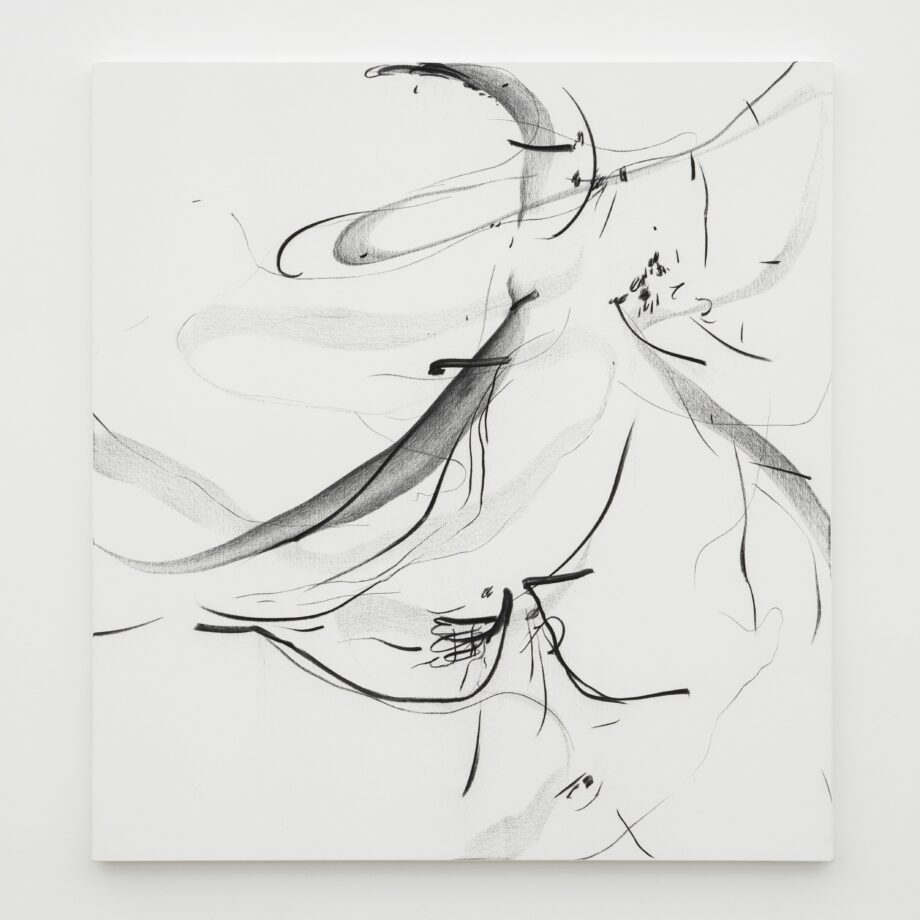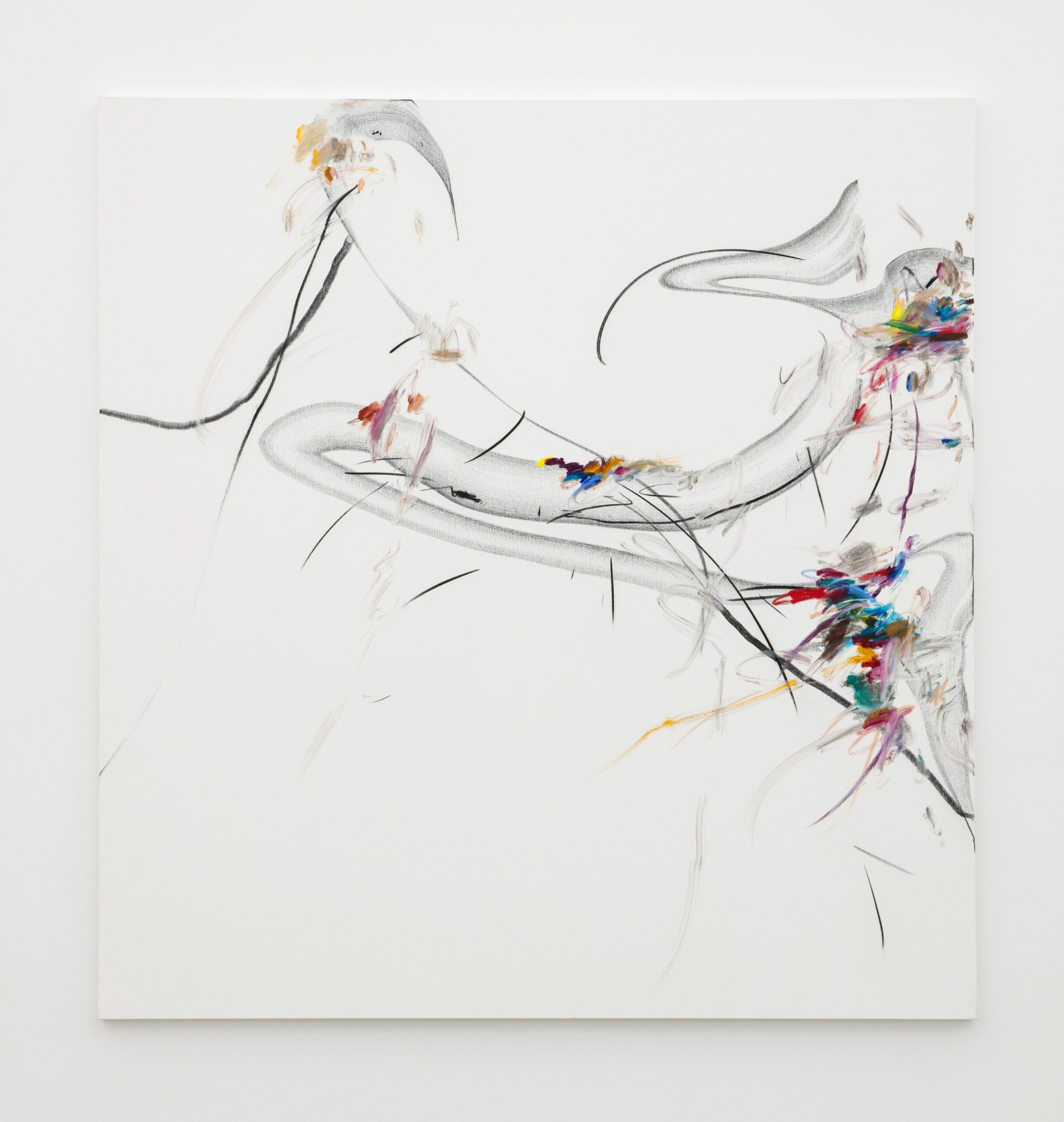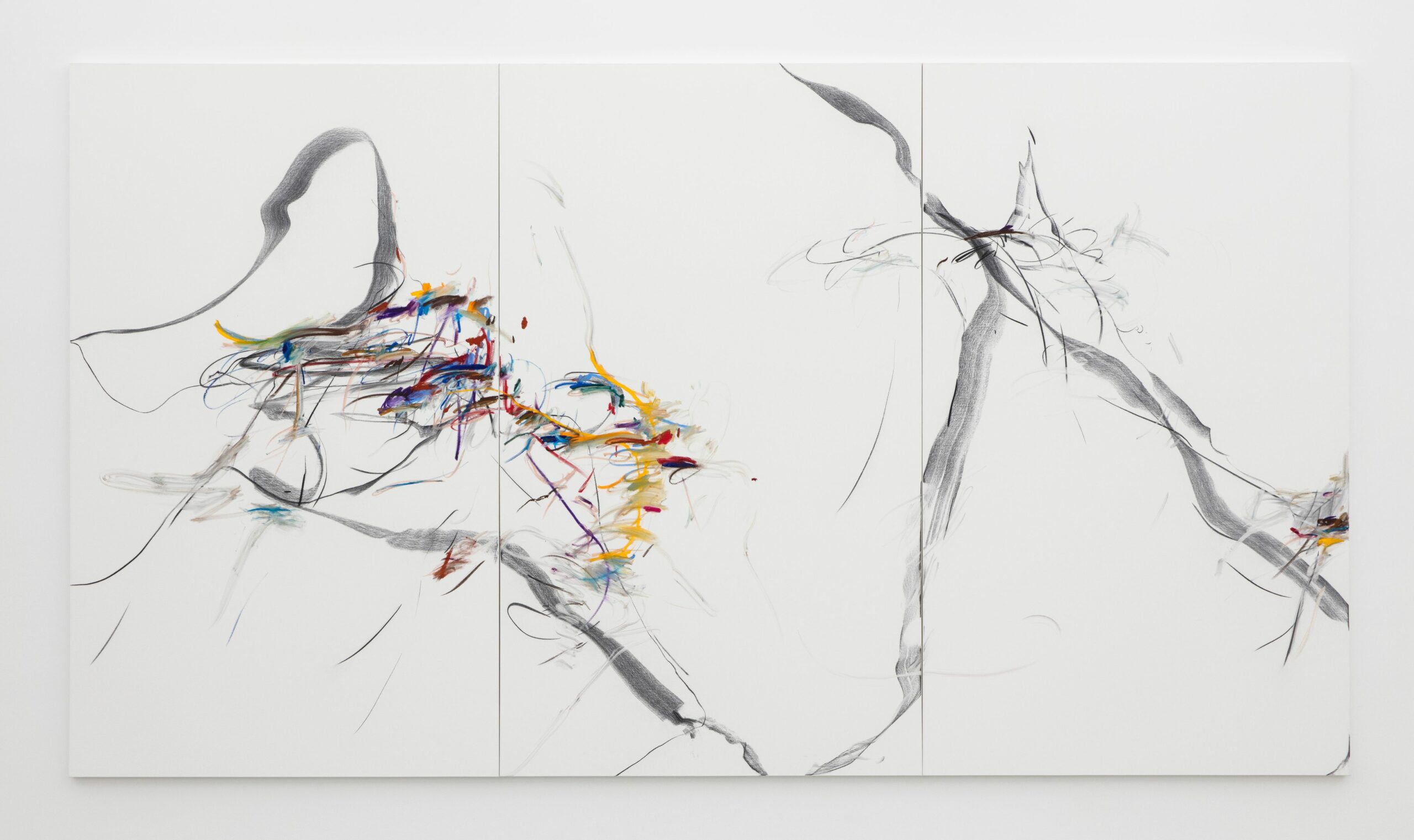
Xiyao Wang has entered her reduction era. The Chinese painter’s approach to the canvas in recent years has been fluctuating between periods of addition and reduction. “The works here are all from my effort to reduce my colours and materials,” she tells Elephant about her new exhibition, Do You Hear The Waterfall, at Perrotin’s New York space. “A challenge to train myself,” Wang responds to why she imposes herself to the constant back-and-forth. “I get out of habit and try to depart from what I am already good at.”
Oil stick, for example, has been a technique she already feels quite competent, so the thirty-two-year-old had pushed her ability to the risky territory of self-confrontation. The result has been a duel with charcoal. Wang started experimenting with the smoke-hued material last year while preparing the paintings for her ongoing Song Art Museum show in Beijing. She was fascinated by “how the material was catching my quick body movements” and started out with the safety of blending the newcomer with the familiar.

The charcoal and oil stick paintings, which are also in her current gallery show, blend the dark graininess of the former with the bright colours she uses for the latter. Tempestuous gestures are contained within white backgrounds, and a sense of serenity is shattered in each undertaking. The real challenge, however, was to completely abandon the oil stick. “My colours in oil stick have always been bright and diverse,” she explains. Transitioning entirely to charcoal and assuming a fully black palette has been a rocky road—yet one that she safely crossed over.
The color-busting paintings in Wang’s first show with Perrotin in Paris two years ago are amiss in her New York debut. Instead, white backgrounds occupy generous lands, marked by erratic charcoal trails that occasionally clash with modest huddles of colourful oil sticks and finger marks. Another group of paintings solely rely on charcoal; they yield electric compositions through the determination of black paint over white canvas. Variations in scale bear the feeling of observing a mountainous landscape where wind deliriously blows.
Controlling her gestures on smaller paintings feels harder, according to Wang—but she has perfected a trick: “I paint smaller paintings like very big paintings and big paintings like smaller paintings.” If a painting doesn’t reveal its direction, she waits a few hours, days, or months. “It will eventually tell you when it is done,” she believes.

Personal history plays a part in the process. Dancing since age five, Wang thinks, is a reason for her dramatic body movements facing the canvas. A ladder helps her reach further up on a large scale, but oftentimes, she jumps to grasp more immediate marks. “I see my movements as a river going into a sea—they are results of muscle memory,” she says, yet admits: “I cannot decide what gestures are intentional.” The main goal for Wang is “to fight with the habit” and avoid repeating gestures that her body finds comforting and easy.
Disrupting her comfort zone was also a reason behind her move to Berlin nine years ago. After formal training in Chinese painting, she realized her curiosity for “strong colour combinations and language” in Neo-Expressionism. “Ink painting tradition in China suggests using fewer colours,” explains Wang, who also spent six months in New York as an exchange student. Visits to Abstract Expressionism temples, like MoMA and The Whitney, also pushed her interest in turbulent brushstrokes. The density of physical gestures on the canvas usually leads to equally delirious tunes at her studio near Hauptbahnhof. “I used to listen to metal or electronic music, like Kraftwerk or Rammstein,” she says, “but I have recently recognized my Chinese roots.” Lately, she has not only been listening to traditional Chinese music while painting but also learning to play Guqin, the string instrument that has also been used by Taoism practitioners for meditation. “I feel connected with the universe and nature—it is magical,” she says about her newfound passion. Wang travelled to New York with her instrument “because I have to play it every day.” Another studio habit she crossed over the Atlantic with is her tea ceremony ritual, which she held at the gallery last Tuesday with the public. Spending studio time alone helps Wang communicate with an old friend. “I talk with the canvas,” she says. “We don’t have to say much because we understand each other well.”
Written by Osman Can Yerebakan






